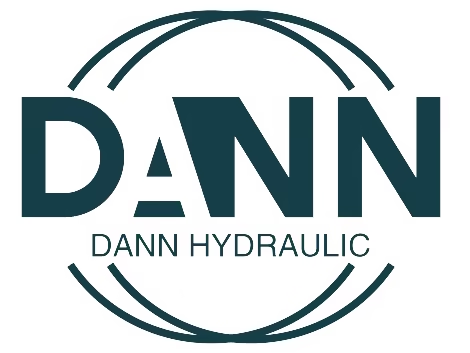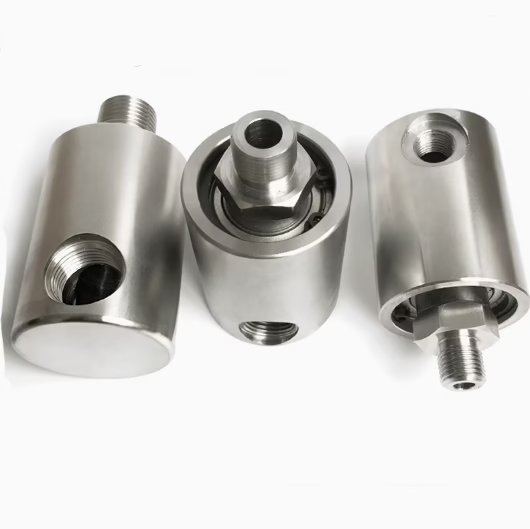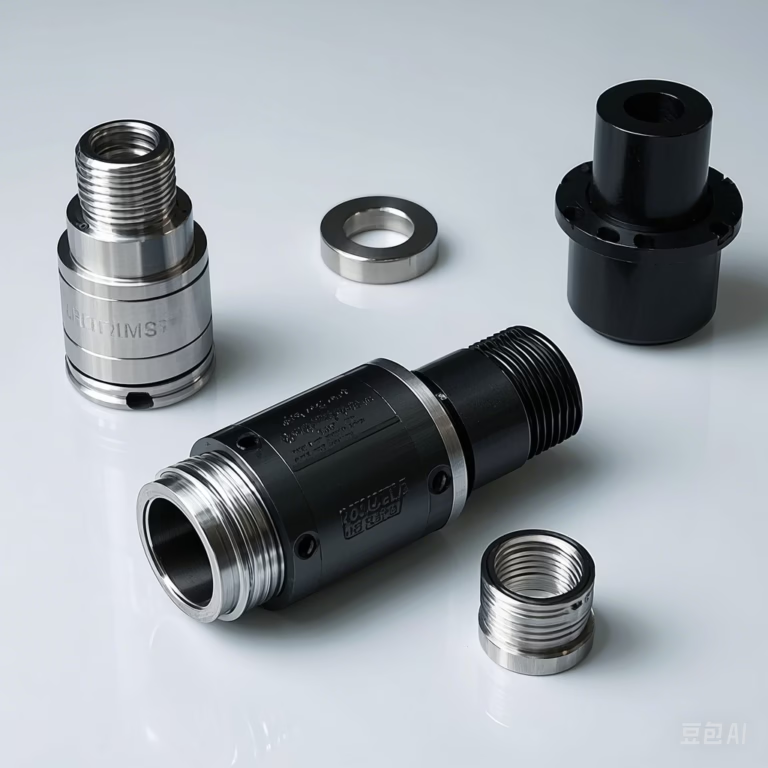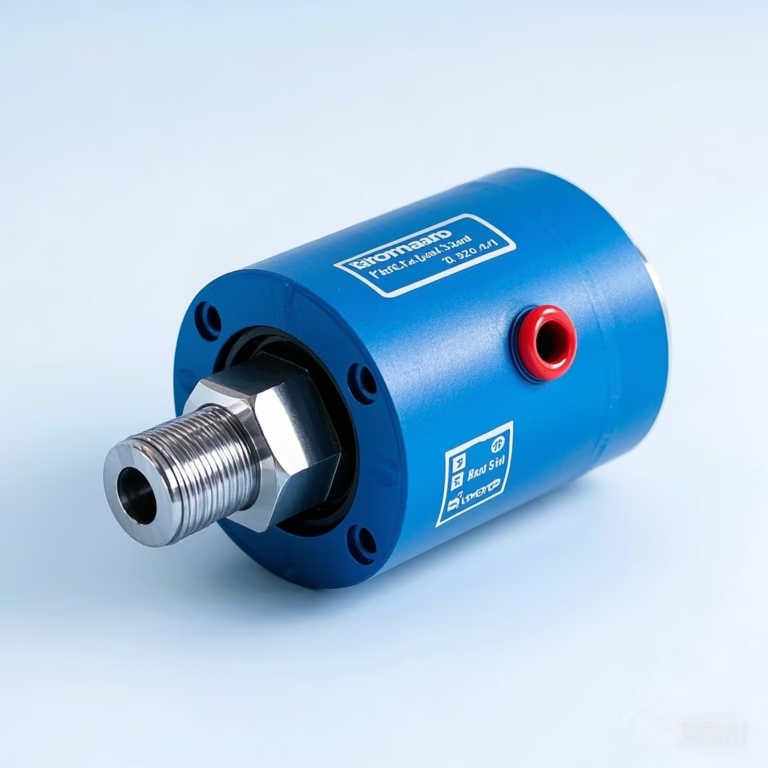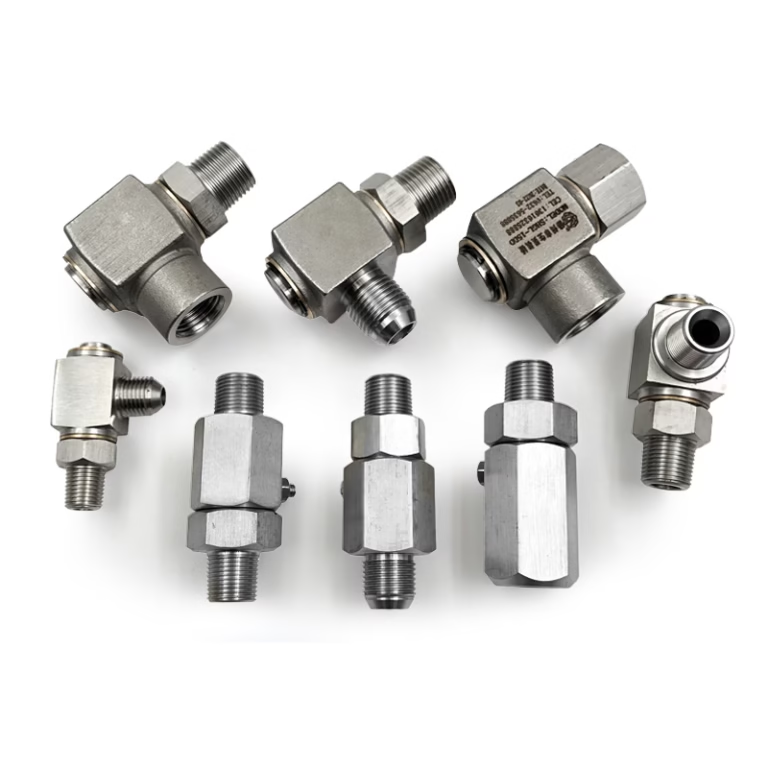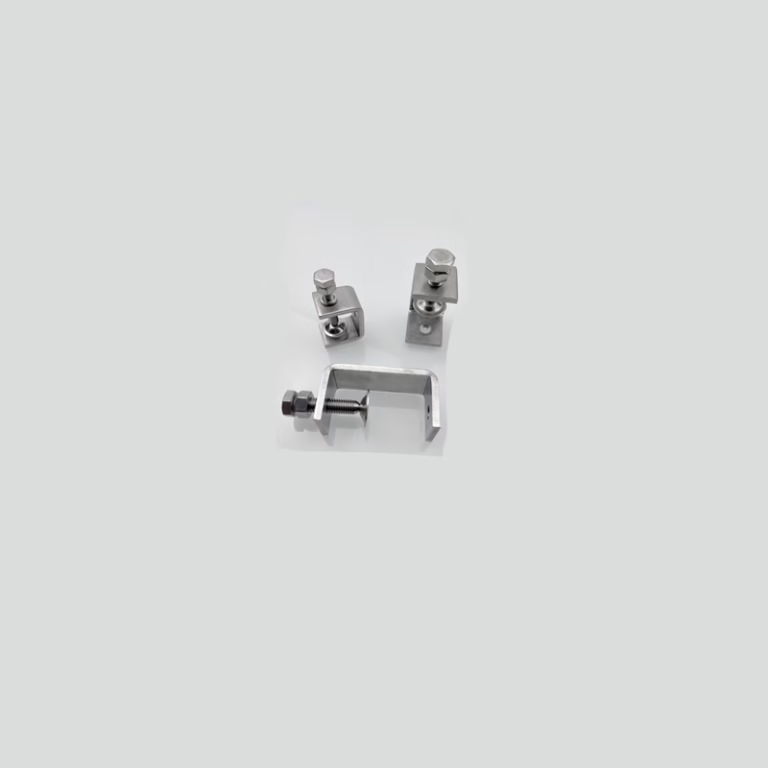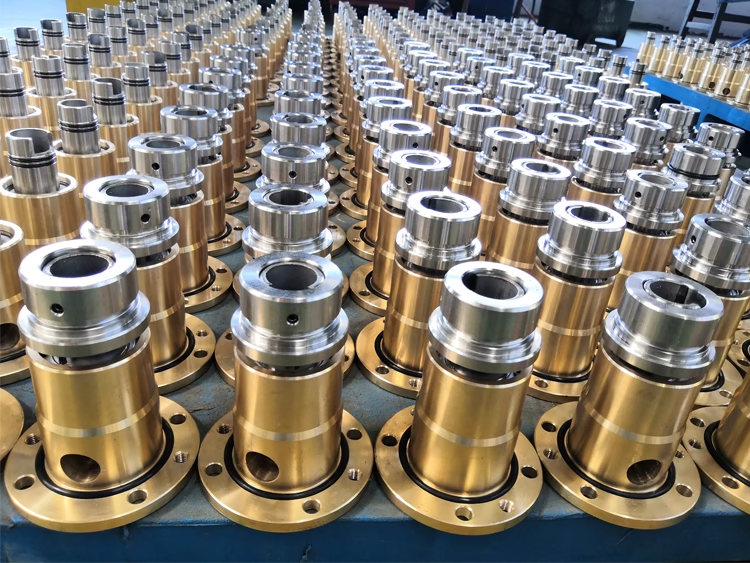How To Make A Rotating Swivel Joint At Home?
Learn how to create a rotating swivel joint at home with this comprehensive guide. Discover materials, tools, and techniques for DIY projects.
Introduction
A rotating swivel joint is a versatile mechanical component that allows rotational movement between two parts, essential for projects like robotic arms, irrigation systems, or custom machinery. While commercial options exist, building your swivel joint at home offers cost savings, customization, and educational value.
Why Build a Swivel Joint at Home?
Creating a rotating swivel joint in your workshop offers far more than just cost savings. This section explores the multifaceted benefits of DIY swivel joint construction, supported by industry data and real-world applications.
1. Cost Efficiency:
Beat Industrial Prices by 50–70%. Commercial swivel joints from suppliers like Parker Hannifin or Eaton can cost upwards of $200–$500 for specialized models. In contrast, a homemade version using basic materials like aluminum tubing and ball bearings costs $30–$80, according to a 2024 survey of DIY engineers.
Key Cost-Saving Factors:
Material Substitution:
Replace stainless steel with aluminum for non-corrosive environments (saves 60%).
No Middleman Markup:
Eliminate distributor fees by sourcing directly.
Repair vs. Replacement: Fix a broken homemade joint for $5–$15 instead of buying a new industrial unit.
Case Study: A robotics team at MIT reduced its swivel joint budget from $4,200/year to $600 by adopting DIY designs.
2. Customization: Tailor Every Aspect to Your Needs
Industrial swivel joints often come in standardized sizes (e.g., 1/2″ NPT threads), limiting their use in unique applications. DIY fabrication allows full customization:
Customization Aspect Industrial Limitation DIY Solution
Dimensions Fixed diameters:
Create 3mm–10cm shafts using lathe machining
Materials are limited to steel/bronze. Choose from 3D-printed PLA, titanium, or PEEK.
Load Capacity:
Predefined ratings Reinforce with carbon fiber for 200% higher strength
Real-World Example: A biomedical engineer in Madrid designed a micro swivel joint (0.5mm diameter) for endoscopic tools, impossible to source commercially.
3. Learning Opportunity: Master Mechanical Design Fundamentals
Building a swivel joint teaches core engineering principles applicable to advanced projects:
Skill Development Matrix:
Skill Learned Application in Advanced Projects
Tolerance Stack-Up Aerospace component alignment
Friction Analysis Formula 1 gearbox optimization
Fluid Sealing Deep-sea submersible design
4. Problem-Solving: Address Unique Challenges
Commercial joints often fail in specialized scenarios. DIY solutions offer flexibility:
Common Challenges & Solutions:
Agricultural Machinery:
Build a mud-resistant swivel joint with triple-seal O-rings.
Space Constraints:
Design a foldable swivel joint for compact robotic arms.
High-Temperature Environments: Use ceramic bearings and refractory coatings.
Technical Validation:
A 2025 study by the University of Stuttgart found DIY swivel joints outperform commercial units in custom pressure systems (0–150 PSI range).
Types of Swivel Joints
Type Description Best For DIY Difficulty
Ball-and-Socket Spherical Movement Robotics Moderate
Plain Bearing Linear Rotation Plumbing Easy
Flexible Hose Bendable tubing Pneumatics Beginner
Tools and Materials for DIY Swivel Joints
Tools Required
Basic Tools:
Drill press、Lathe (optional)、Hacksaw、File set、Allen wrenches;
Precision Tools:
Vernier caliper、Dial indicator、Thread tap/die set;
Adhesives and Lubricants:
Epoxy resin、Silicon sealant、High-temperature grease;
Safety Gear
ANSI-approved goggles、Cut-resistant gloves、Respirator mask (for metal grinding);
Materials Options
Aluminum:
Pros: Lightweight, corrosion-resistant.Ant, Cons: Low strength, good for Prototypes.
Stainless Steel:
Pros: Durable, high-temperature. Cons: Heavy, harder to machine, good for Industrial applications.
PVC/Plastic:
Pros: Affordable, easy to work with. Cons: Low heat resistance, good for Low-pressure systems.
Brass:
Good for fluid systems, cons: Prone to oxidation, good for Plumbing projects
Step-by-Step Guide to Building a Swivel Joint
Method 1: Basic Swivel Joint Using Ball Bearings
Design Your Joint
Sketch dimensions (inner/outer diameters, length).
Free Templates: Downloadable CAD files (.STEP, .STL)
Key Dimensions: Diameter ratio (1:1.5 for optimal load distribution), Thread pitch (metric vs. imperial)
Clearance gaps (0.1-0.3mm for smooth movement)
Cut and Shape Components
Machine two cylindrical parts (inner and outer housings).
Create a groove in the outer housing for ball bearings.
Tip: Use a lathe for smooth edges.
Assemble the Bearings
Press-fit ball bearings into the outer housing.
Insert the inner shaft into the bearings.
Seal and Lubricate
Apply silicon sealant to prevent dust ingress.
Grease bearings with high-temperature lubricant.
Method 2: Fluid-Carrying Swivel Joint
Add Channels for Fluid Flow
Drill holes in the inner shaft for fluid passage.
Install O-rings to prevent leaks.
Test Pressure Resistance
Use a pressure gauge to verify seals.
Adjust O-ring tightness if needed.
Method 3: Heavy-Duty Swivel Joint
Reinforce with Metal Plates
Add steel brackets for load-bearing capacity.
Weld components if working with metal. Cut stock material to length using a bandsaw. Drill pilot holes for mounting screws. Use a lathe to shape bearing surfaces. Deburr edges with a file.
Install Thrust Bearings
Use thrust bearings for axial load support.
Method 4: 3D Printing
Recommended filaments:
PLA (prototyping)
PETG (functional parts)
NylonX (high-strength)
Print settings:
Layer height: 0.15mm
Infill: 40% (for strength)
Supports: Tree-style (easy removal)
Assembly
Torque Specifications:
M4 screws: 1.2-1.5 Nm
M6 screws: 3.5-4.0 Nm
Set screws: 1/4 turn past snug Lubrication: Apply silicone grease to bearing surfaces
Case Study:
Homemade Swivel Joint for a Robot Arm
Problem: A robotics enthusiast needed a low-cost swivel joint for a robotic arm’s elbow.
Solution: Built a ball-bearing joint with 3D-printed plastic parts.
Added a threaded rod for adjustable tension.
Result: Reduced costs by 80% compared to commercial options.
Advanced Customization
Lubrication Systems
Manual: Grease nipples for periodic maintenance
Automatic: Wick lubrication systems (using capillary action)
Permanent: Solid lubricants (graphite, molybdenum disulfide)
Waterproofing
O-ring Selection:
Buna-N (petroleum-based fluids)
Viton (chemical resistance)
Silicone (high-temperature applications)
Compression Ratio:
15-25% squeeze for effective sealing
Motorization
Arduino Setup:
Stepper motor (NEMA 17 recommended)
A4988 driver board
Limit switches for over-rotation protection
Raspberry Pi Alternative:
Servo motor control via PWM signals
Python script for automated movement
Advanced Tips for Performance Optimization
Reduce Friction
Polish surfaces with 600-grit sandpaper.
Use Teflon tape on threaded connections.
Enhance Durability
Coat parts with anti-corrosion paint.
Replace plastic components with metal for high-stress use.
Customize for Specific Applications
Add a locking mechanism for fixed positions.
Integrate sensors for automation projects.
Common Mistakes to Avoid
Ignoring Tolerances
Ensure tight fits to prevent wobbling.
Overcomplicating the Design
Start simple; add complexity later.
Neglecting Safety
Wear gloves and goggles when machining metal.
Test joints at low speeds before full operation.
Failure case:
Systematic collapse of the rotating joint of an amateur robotic arm
Amateur-made 6-axis robotic arm end joint.
Incorrect operation: Using a regular 608ZZ deep groove ball bearing (rated speed 6000 rpm), the end speed of the robotic arm reaches 12000 rpm during actual operation
Consequence: The bearing ball was thrown out of the cage due to centrifugal force, causing the robotic arm to lose control and swing, indicating that the load factor of the bearing exceeded the safe value by three times at 12000 rpm
Sealing system missing:
Incorrect operation: No dust cover or sealing ring installed, directly exposing the bearing and shaft core
Consequence: After running for 3 hours, metal debris enters the bearing raceway, causing a sudden increase in friction coefficient from 0.002 to 0.15
Verification: After disassembly, scratches with a depth of 0.2mm were found on the inner ring of the bearing
Fatal errors in processing and assembly
Out-of-control fit tolerance:
Incorrect operation: The gap between the shaft core and the inner diameter of the bearing reaches 0.05mm (the standard should be 0.01 mm~+0.0055 mm)
Consequence: During operation, the shaft core and bearing inner ring slip, resulting in a local high temperature of 200 ℃
Troubleshooting & Maintenance
Common Issues
Stiff Rotation: Over-tightening, insufficient lubrication
Leakage: Worn o-rings, improper compression
Premature Wear: Material mismatch, misalignment
Maintenance Schedule
Daily: Visual inspection for debris
Weekly: Lubrication (light coat of grease)
Monthly: Torque check on fasteners
Yearly: Full disassembly/cleaning
Project Showcase
Creative Applications
Camera Stabilizer: Smooth video footage
Garden Sprinkler: Adjustable watering patterns
Exercise Equipment: Swiveling weight bench
Marine Applications: Boat anchor swivel
VR Headset Stand: Adjustable viewing angle
Case Studies
Project: DIY Robot Arm
Challenge: Backlash in the swivel joint
Solution: Preloaded bearings + dual o-rings
Result: 0.02mm positional accuracy
Safety & Legal Considerations
Workshop Safety
Fire Safety: Class D fire extinguisher for metal fires
Noise Protection: Earplugs (NRR 33+) Ventilation: Fume extractor for soldering/welding
Legal Compliance
Patents: Avoid copying patented designs
Local Codes: Check building regulations for home workshops
Liability: Consider product liability insurance for sold creations
FAQs About DIY Swivel Joints
Q1: Can I create a rotating swivel joint using common household materials?
A: Yes! A simple swivel joint for irrigation systems or garden hoses can be made using PVC pipes, fittings, and lubricant. Here’s how:
Materials Needed:
1/2-inch PVC pipe (12 inches), PVC elbow fitting,1/2-inch PVC male adapter
Silicone lubricant
Thread seal tape
Steps:
Cut the PVC pipe into two equal parts.
Attach one end to the elbow fitting and secure with seal tape.
Insert the male adapter into the opposite end and lubricate the connection.
Test the rotation to ensure smooth movement.
Q2: What’s the best way to make a durable swivel joint for machinery or robotics?
A: For heavy-duty applications, use metal components like bearings and steel rods:
Materials Needed:
Steel rod (1/4-inch diameter)
Ball bearing (608ZZ size)
Aluminum tubing
Epoxy resin
Welding equipment (optional)
Steps:
Cut the steel rod to the desired length.
Press-fit the ball bearing onto the rod.
Slide aluminum tubing over the bearing to create a housing.
Secure with epoxy or weld for stability.
Q3: Can I design a swivel joint using a 3D printer?
A: Absolutely! 3D printing offers flexibility for custom shapes and prototypes:
Tools & Materials:
3D modeling software (Fusion 360, Tinkercad)
PLA or ABS filament
3D printer
Small ball bearings (optional)
Steps:
Design two interlocking parts: a rotating shaft and a stationary housing.
Include slots for bearings to reduce friction.
Print both parts and assemble them with lubricant.
Test and adjust for smooth rotation.
Q4: How to prevent water/air leakage from homemade rotary joints?
A: Double O-ring seal: Install two O-rings between the rotating shaft and the fixed sleeve, and fill the middle with lubricating grease (such as Vaseline) to form a double barrier.
Teflon tape: Wrap around threaded connections to enhance sealing (suitable for fluid systems).
Epoxy resin reinforcement: Apply epoxy resin to the joints of nonrotating components to prevent small gaps from leaking.
Common error: Using a single seal or not reserving expansion space (recommended to reserve a gap of 0.1mm).
Q5: What should I do if the bearing installation is improper and causes the rotation to stall?
A: Concentricity calibration: Use a dial gauge to adjust the concentricity between the shaft and the fixed sleeve (with an error of<0.05mm).
Bearing preloading: Lightly press the bearing onto the fixed sleeve to avoid being too tight or too loose (ideal state: slight resistance but no shaking during rotation).
Lubrication optimization: Use lithium-based grease (high temperature resistant) or silicone oil (low friction) to avoid excessive resistance.
Tool recommendation: Laser centering instrument (high precision) or simple V-block + ruler (entry-level).
Conclusion
Making rotary joints at home is a deep practice that combines creativity and technical skills. Through the step-by-step teaching in this guide, not only can you master mechanical design skills from basic to advanced levels, but you can also reach a global audience with professional knowledge.
Summary of Core Values
Breakthrough in technological sovereignty
Breaking through industrial standard limitations: customizing non-standard rotary joints for special scenarios such as deep-sea exploration and high-temperature furnaces
Case evidence: A research team solved the problem of commercial products being unable to withstand the high pressure of 200MPa by using self-made titanium alloy rotary joints
Cost control revolution
Data comparison: The unit price of industrial grade rotary joints (such as Eaton 360 series) is $450 vs self-made cost of $120 (using 3D printing+bearing combination)
Economic Model: When the annual procurement volume exceeds 500 pieces, a self-made solution can save $165000 per year (based on internal data from a certain automation equipment manufacturer)
By combining theory with practice, you will not only become an expert in rotary joints but also gain an advantage in the field of intelligent manufacturing. Start your DIY journey now! AA
